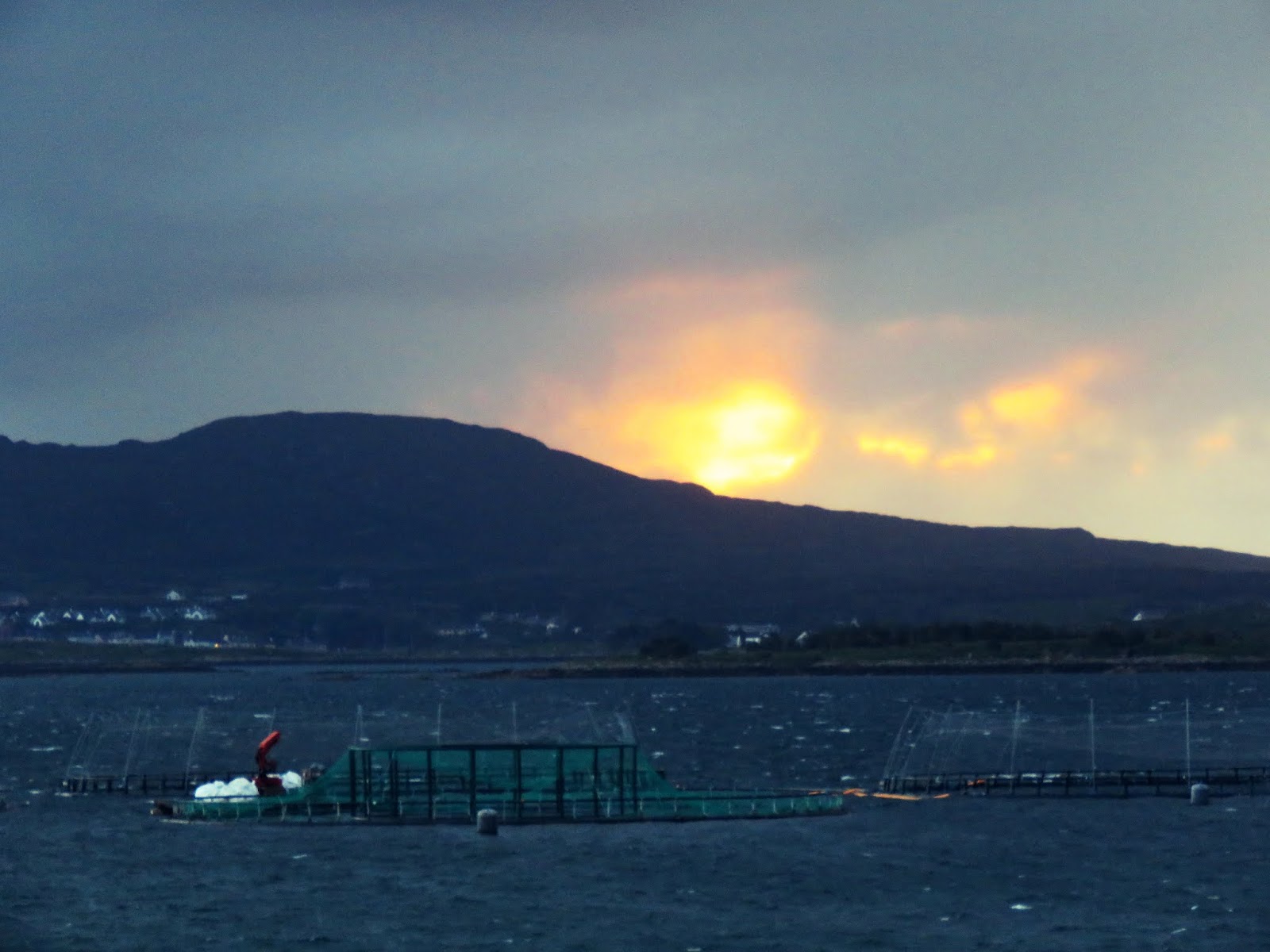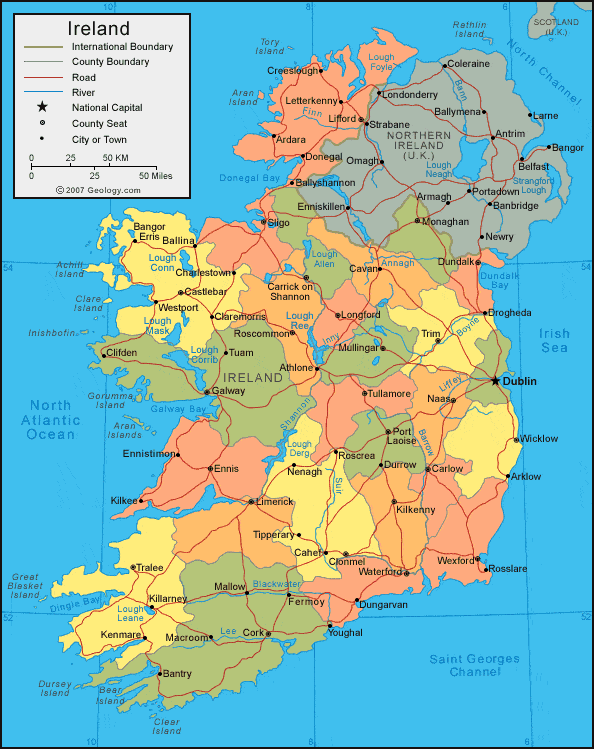 |
| A portion of the Twelve Bens mountains. |
“Fascinating Fact of the Day About Ireland”
|
“Funerals are sad occasions in Ireland, but they are very seldom a sad event. Family members use funerals to speak about the deceased life and share memories. Funerals are held in churches and often include food and drinks. Many churches tried to ban alcohol years ago but failed in doing so, and now allow alcohol at each funeral and wedding.”
|
It’s 14C, 57F, and yet after 15 months in the heat and humidity of South Africa, we’re feeling the cold. There’s a unique solar system for the house, which includes a range used for cooking and warming the house. Here’s a photo of the range, which we’ve seen now and then in photos of potential rental properties throughout the world.
 |
| This is a Rayburn range used for heating the house, cooking, and the water. |
This is our first experience operating this type of system, and Eileen stopped by this morning to ensure it provided enough heat to keep us comfortable. She’d explained how to use it the day we arrived, but we were so exhausted after an overnight flight that we neither remembered how to use it except for the oven.
There’s a well-prepared loose-leaf binder here with instructions for literally everything in the house. But neither refer to these instruction booklets unless there’s an emergency after we’ve usually read it within days after our arrival.
 |
| Ireland is undoubtedly known for being green and aptly named “The Emerald Island” with its cool, rainy weather. |
Now, with her instructions, we have heat in the house, certainly, enough to take the chill out the air and the fire burning in what appears to be an “insert” type of fireplace rather than an open hearth.
Yesterday, we continued the tedious task of finding where we’ll stay in England for 62 days, beginning on August 23rd and ending on October 24th. This hasn’t been an easy task.
 |
| Connemara ponies as described here: From this site: “The Connemara’s origins are shrouded in mystery. Some believe that they are descendants of horses brought over by Vikings, and others that they are descendants of the Irish Hobby, which was once hugely popular but is now extinct. There is also a legend that Andalucian horses found their way ashore after the destruction of the Spanish Armada and bred with the local ponies. It is known that many of the ships which survived the initial attack subsequently were wrecked off the coasts of Scotland and Ireland (partly due to severe storms), and so it is at least feasible that some horses (and humans) would have made their escape to shore. This may be why Connemaras are notably finer than most native breeds, although there was also extensive cross-breeding in the 18th century, particularly with Arabs and also Thoroughbreds and Hackneys.” |
Yesterday, Tom had an ingenious idea (to us anyway) that rather than book one property for the entire 62 days, we should book three or four properties in different areas for sequential dates. At first, I hedged over his suggestion when thinking about packing and unpacking every two weeks or so.
But, after careful consideration, I agreed this was an exciting idea. Now the challenge is finding suitable properties in four distinct areas with dates matching accordingly.
 |
| Gorgeous views of the countryside. |
Over the next few days, we’ll continue the research, mainly using the HomeAway link on our website to take us to the thousands of listings in England. In the past few years, HomeAway purchased several vacation/holiday home websites, leaving them number two next to Airbnb as follows:
“A major vacation rental website is HomeAway, and it is one of the main competitors to Airbnb. The company is now owned by Expedia (as are Vrbo and VacationRentals.com).”
“Which Is Bigger: HomeAway or Airbnb? HomeAway and its companies (such as VRBO and VacationRentals.com) have over one million listings in 190 countries. However, with 2.3 million listings worldwide, from 640,000 hosts across 191 countries, Airbnb is the clear winner of the size competition.”
Why don’t we use the larger company AirBnB? We have used it a few times. But, overall, we prefer HomeAway because they have a more liberal deposit program as opposed to paying 100% of the cost for the rental at the time of the booking.
 |
| Sunset view from our house. |
Occasionally, we may book a property a year or more in advance. We do not want to lay out the entire amount for a two or three-month rental so far in advance. Plus, Airbnb has a considerable amount of shared housing situations, none of which appeal to us.
So, back to the drawing board today as we continue our search. We hope that by the end of the weekend, we’ll have this wrapped up.
Tomorrow, we’ll share a frustrating car rental situation. Please check back then.
Enjoy your day, your weekend, and everything you do.
 |
| Excellent nighttime viewing. Kudus seem to be intimated by zebras due to their powerful kicks and, thus, won’t join in on the snacks. For more photos, please click here. |


































































































